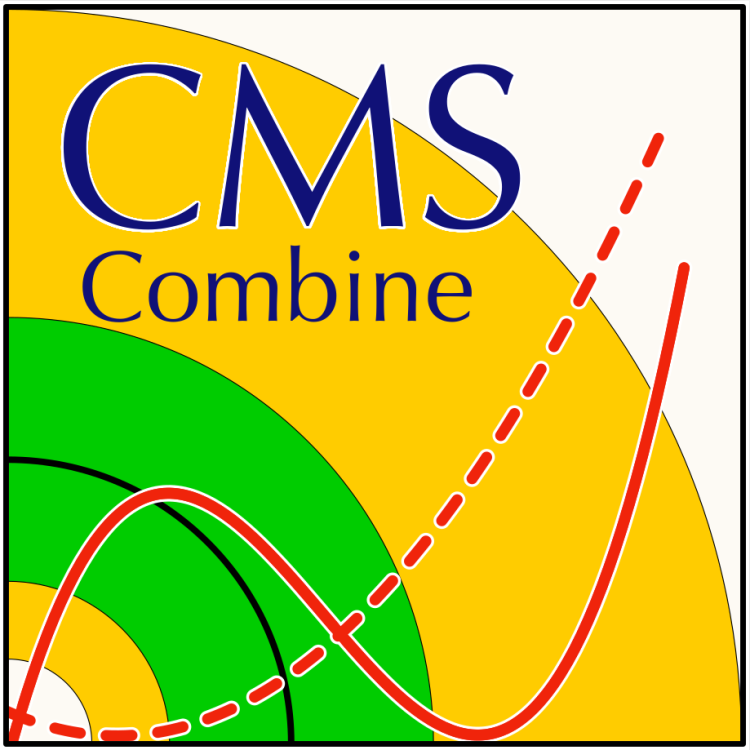
As a next step towards more open access to science, the CMS collaboration has just released in electronic format a set of likelihood functions describing early measurements of the Higgs boson. The full statistical model and the data used to make the measurements are provided. This includes the combination of all the Higgs boson searches that established the 2012 discovery of the Higgs boson. This release happens simultaneously with the publication of a comprehensive description of the Combine software, the statistical analysis tool developed during the first LHC run (2010-2012) for the Higgs boson searches and since then adopted ubiquitously in CMS.
Physics measurements at the CERN Large Hadron Collider are usually reported as a central value and its corresponding uncertainty. For instance, together with the observation of the Higgs boson in LHC collisions, CMS measured its mass to be 125.3 GeV (the proton mass being about 1 GeV) with a relative uncertainty of about 0.5%. But this is just a brief summary of the measurement outcome, like the title in a book. The full information extracted from data in a measurement is encoded in a mathematical function that uses the full statistical model, technically known as the likelihood function. This function depends on the value of the quantity we want to measure, as well as external factors, e.g., the calibration of the detector, the accuracy of the CMS detector simulation, and other so-called systematic effects. A likelihood function can be very complex since one has to pin down many aspects to fully account for the messy collisions produced at the LHC. For instance, the combination of the LHC Run 1 Higgs searches resulted in a likelihood function of nearly 700 parameters for a fixed value of the Higgs boson mass. Of these, only a few are the interesting physics parameters one wants to extract, like the number of Higgs bosons found in the data, while others are the parameters that model the systematic uncertainties. Each of these quantities corresponds to a dimension of a multi-dimensional abstract space, in which the likelihood function can be drawn. It is very hard for humans to visualize a space with more than a few dimensions. Releasing the likelihood function in an electronic format allows us to go around this problem. With publicly accessible likelihoods, physicists outside the CMS collaboration can now include the results of our measurements in their studies in more ways and with greater precision compared to using the simplified likelihoods previously published by CMS. Besides the Higgs boson observation likelihood function, we also released the Combine software, used to model these likelihoods and fit the data, in a ready-to-use format called a “container image” together with its documentation.

Fig.1: Projection of the Higgs discovery likelihood functions on κV and κF, the two parameters determining the coupling of the Higgs boson to vector bosons (W and Z) and fermions. The parameters κV and κF are defined so that κV=κF=1 corresponds to the expectation from the standard model and κV=κF=0 to the non-existence of the Higgs boson. Contours represent specific values of the likelihood functions that are related to the uncertainty on the two parameters shown. Contours are shown for the likelihood functions from individual measurements in different colours, as well as for the full combination of measurements, including all relevant information.
This Combine release and the publication of a first set of likelihood functions is a new milestone in our decade-long commitment towards a fully open science. It joins hundreds of open-access publications, the release of almost 5 PB of our data on the CERN open-data portal, and the publication of our entire software framework on GitHub. This first likelihood release was an opportunity for us to establish an internal protocol to collect likelihood functions of our publications, which will now be followed as part of a new result release. This initiative is part of the activity of the Common Analysis Tools group, established one year ago to harmonize and modernize data-science tools across the various groups in our collaboration.
Read more about these results:
-
CMS Paper (CAT-23-001): " The CMS statistical analysis and combination tool: Combine "
-
@CMSExperiment on social media: LinkedIn - facebook - twitter - instagram

